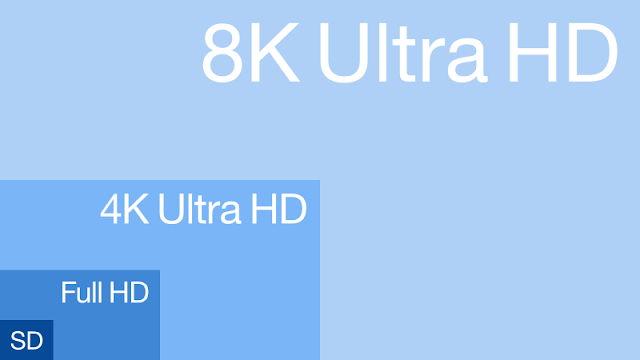Know about the Best TV Buying Guide Hey friends, Do you want to buy a TV for your home? If Yes then What type of TV is LCD, LED, OLED, Plasma, or Quantum Dot? What should be the size of the tv-32inch,43inch,55inch, or 64inch? Don’t worry friends…Here is the Best TV Buying Guide 2025
Guys, Whenever you go to buy a TV for the first time in your life, you will hear several such questions from the salesman. But most of the customers don’t have the proper knowledge about these pieces of information and they easily get fooled by the salespersons.
Do not fall for marketing promotion, and do not spend your money on the basis of inaccurate reasoning. If you are in the market to buy a new TV, then you must have the following things in mind.
Also read:- 10+ best wireless mouse under 1000
LCD vs. LED-Best TV Buying Guide
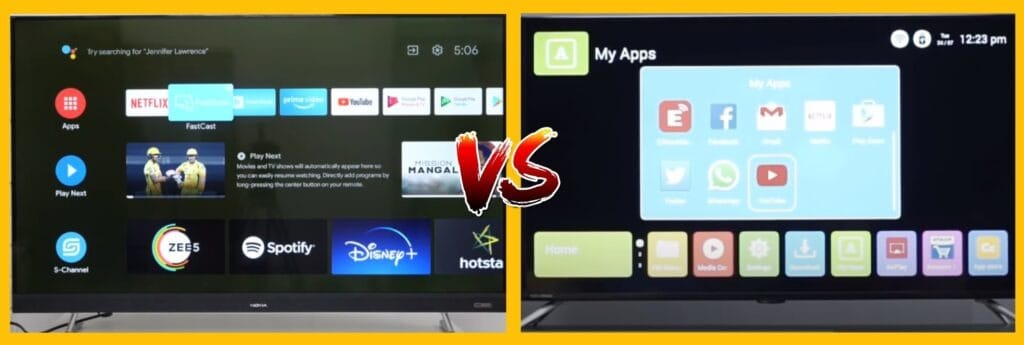
Despite being a different name, an LED TV is similar to LCD TV in almost all aspects. The main difference is the source of light(Backlight) present behind the screen. Actually, In Liquid Crystal Display(LED) concept, It uses the light-modulating properties of liquid crystal to allow screen light to stop or pass through it.
Each of them creates a tiny piece of crystal image(pixels) and together creates a very clear image. Both LCD and LED TVs work on the same concept but there is a difference in the fact that In LCD TVs cold cathode fluorescent lamps (CCFLs) are used as a backlight, whereas in the case of LED TVs efficient Light-Emitting Diodes (LED) are used to illuminate the display.
These bulbs are comparatively smaller. But they are brighter and more efficient than CCFLs. That is, for quality pictures of the same kind, which TV LED screen is often slimmer than the LCD screen. LEDs can be divided into categories.
OLED vs. QLED

OLED stands for Organic Light Emitting Diode. Unlike LED TV it has its own source of light which means there are numerous very small LED bulbs present behind the display (LEDs are arranged like pixels behind the screen)which produces images.
It does not need any backlight, due to which it is much thinner than LED TV. Its viewing angle, colour contrast, and colour accuracy are far better than LED TVs. It is also blur-free and pixel brightness and range are much higher than LED TVs.
You can also watch TV easily and clearly by sitting in a slanting position. You will not see the overlapping of colours, which means black colour would be visible as full black and white colour as full white. Due to its clarity and other specialities, it is the best choice however it is very expensive.
Now let us talk about QLED TVs. It stands for Quantum dot Light Emitting Diode. QLED (Quantum Dot LED) TVs are the type of LED TVs that use quantum dots(which are miniature re-emitters that produce nearly pure colours in strict correlation to their size)which improve performance in important photo quality areas.
It enables QLED TVs to provide brightness level and picture quality compared to LED TVs. The QLED TV can display more colours than LED TVs without quantum dots.
Recently, brands like TCL have also announced their QLED TVs. Most of the experiences of watching QLED and OLED are the same. If you want better quality, frame rate, and contrast then QLED and OLED are best but their prices are higher than other TVs.
PLASMA TVs
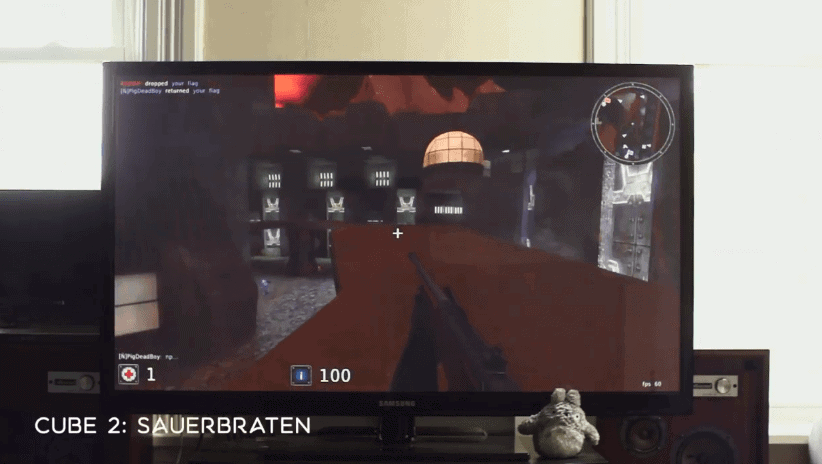
The plasma display is a type of TV in which each pixel has its own luminance as behind the display, charged gases(plasma) are present. Plasma is placed between two thin glasses.
The display of plasma is better in dark places and its viewing angle is better than LCD also it has good pixel quality and perfect colour combination. Sizes of plasma TV are available between 37 and inch-100 inches.
It can have a problem of burn-in(Damage to a display when a very bright image has been displayed for a long time) also it is not as bright as LCD.
A regular TV-watching person must have heard about the word TRP of shows and channels. But have you ever tried to know what is the meaning of this TRP? If you don’t know, we have created an informational post for you. Visit that post and learn about the TRP
TV screen Resolution
When you turn on your TV or Computer or Mobile, look at its display and you will see very little small dots in it. Those Dots are called Pixels. These are always divided into Rows and Columns on the screen, we call the Pixels divided into two Rows and Columns.
For Example, if your computer, TV, or smartphone screens have 600 Pixels and 800 Pixels in rows and Columns respectively, then your device’s screen resolution is 800 × 600. The better your screen’s pixels will be as good as the resolution of your screen. And the picture will look clear.
You must have heard of SD, HD, FULL HD, QUAD HD, 4K Ultra HD, etc. Whenever you buy the best smart TV You can see some printed writing such as HD or FULL HD, So these are nothing but resolutions.
Names are assigned according to the numeric values of pixels like
- SD(Standard Definition):- 720 × 576(4,14,720 pixels present inside the display)
- HD(High definition):- 1220 × 720(8,78,400)
- FULL HD:- 1920 × 1080
- QUAD HD:- 3840 × 2160
- 4K Ultra HD:- 4096 × 2160.
So high is the resolution of your TV more will be the clarity of the display. So now whenever you buy a product, definitely check the resolution of its screen.
Note: Stay tuned with the latest Flipkart Upcoming sales and events by bookmarking our website Techsonu
Screen Size-Best TV Buying Guide
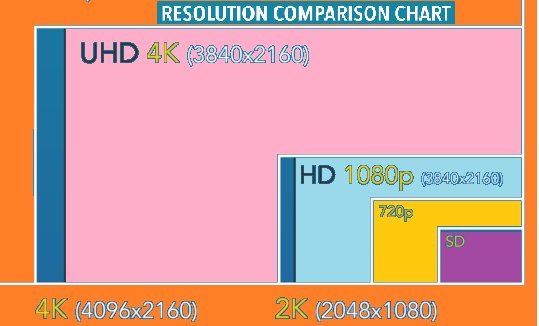
Generally, customers think that the bigger the size of the TV under their budget, the better would be the TV. But before you decide on the size of the TV you should consider the size of the wall unit and the interior of your house.
Remember that the size of the TV screen is measured diagonally i.e. opposite angles, not the height or width The size of the TV screen is written on the TV product’s page.
You should not regret buying a small TV because if you are going to buy a big TV then you have to sit at a great distance from the TV screen, otherwise you will see blurry images and videos.
There are various recommendations from manufacturers, shops, and reviewers. The method is that you measure the distance between the sitting area and the TV inch and divide it by 1.5. For example, if you are planning to sit 7 feet (84 in) away, the “ideal” screen size will be 54-56 inches (84 / 1.5);
The distance of 10 feet, which is quite specific, if you are watching TV from the bed then it means that a 66-inch TV will be perfect for you. Therefore, it would be best if you buy the largest possible screen TV that fits your budget, and your room should be able to keep the TV at a distance of 5-6 feet from the watching position
Also read:- How to get call details in Idea and JIO operator?
Refresh Rate and Contrast ratios of TV
Refresh Rate
One video is a combination of many images. When you play a video, several images display on your screen rapidly in just one second. So Refresh rate is the number of times an image has been refreshed in one second on your TV screen.
It is measured in frequency(Hertz) which is denoted by the symbol Hz. Mainly TV has two types of refresh rates- 1.60Hz and 2.120Hz Now, which one is better? 120Hz because it will redraw the image twice as compared to the 60Hz display. Also, it reduces the motion blur effect in a video.
Refresh Rate vs. Frame Rate-Best TV Buying Guide
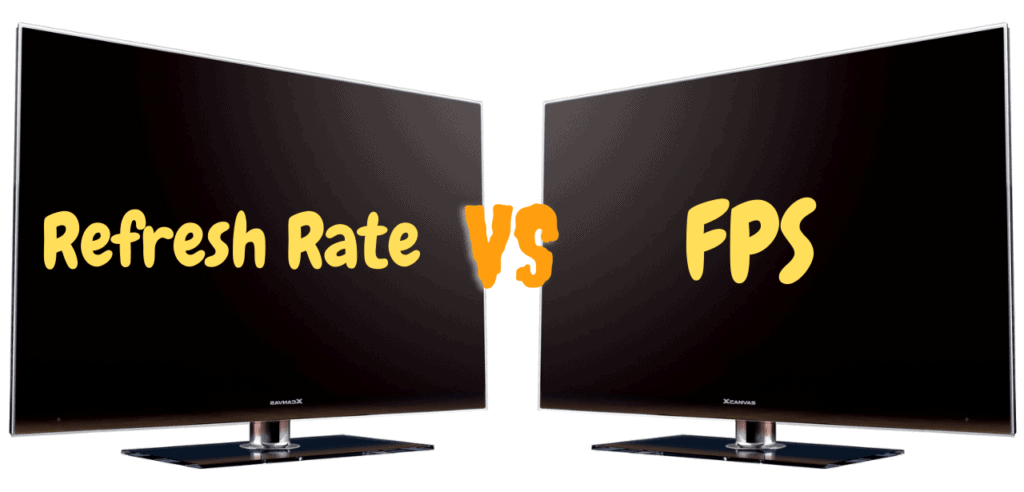
Now don’t confuse the frame rate with the refresh rate. Refresh Rate is somehow related to the monitor or we can say it is a property of the display, whereas frame rate is the property of a video.
Frame rate means the number of images shown in 1 second so that these collections of images can be shown sequentially as video to our eye. If we go to the properties of any video we can see frame or frame per second(fps).
For eg., if the Frame is 60 fps, it means that 60 images(frame) are shown orderly in one second. Refresh Rate is somehow related to the device which shows the video like TV.
It means how many times individual pixels of the screen or panel will refresh themselves in 1 second. If the refresh rate is 60Hz then pixels will refresh themselves 60 times per second and show you new colors.
For eg., If you have a 60 Hz frame rate monitor then you can easily play a video of 60fps and the same video cannot be played on those monitors having a refresh rate of less than 60Hz
Contrast ratio

It is the ability of TV to generate the brightest white and darkest black. It is the ratio of the luminance of the brightest white and the darkest black.
The deepest black and brightest white are displayed when the ratio is high. Manufacturers of TVs increase the intensity of the LEDs or CCFL to show white colour and almost turn off the luminance to show black colour.
OLED and QLED are better in contrast ratio than LED and LCD because they do not have any backlight each pixel produces its own light, so the pixels simply turn off to show the darkest point and increase their brightness to show the brightest point.
A good contrast ratio of TV can be said when its ratio is 3000:1 or higher. So it means the higher the contrast ratio, the higher the picture quality.
Smart TV & Non-Smart TV: Best TV Buying Guide
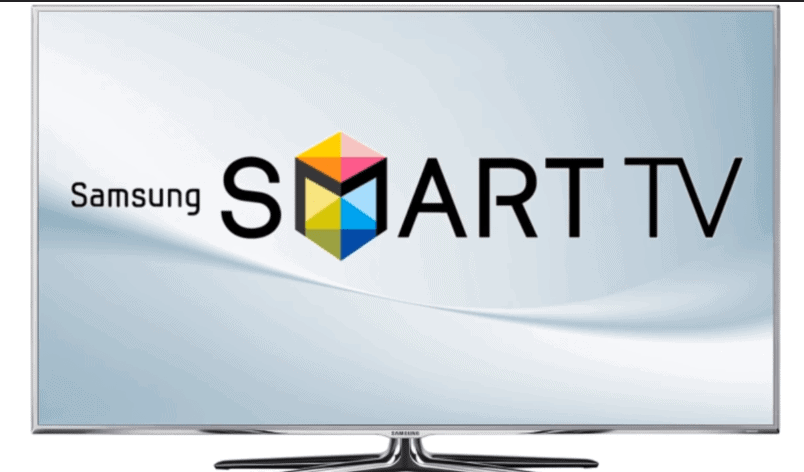
Before talking about Smart TVs and Non-smart, I want to inform you that you can use the functions of smart TV in normal TV by using Chromecast and Amazon Fire TV Stick devices, We will talk about this later.
Now let us come to our topic. Normally non-smart TV has basic features such as adjusting the colour, contrast ratio, volume control, etc. Smart TV has features of normal TV along with some extra features such as Wi-Fi streaming, Web connectivity, YouTube, Netflix, Amazon Prime, etc.
Usually Normal TV and Smart differ in price by 15,000-20,000 INR, so if your budget is low then I recommend you to buy a Non-Smart TV because as I said you can also enjoy the features of smart TV by just spending 2,000-4,000 INR in Chromecast or in Amazon Fire TV Stick devices.
The major problem that happens with a smart TV is that most of the apps will be Outdated after a couple of years. So, it depends upon you what type of TV you want to buy. If your budget is high you can buy a Smart TV otherwise you can go for Dongles or a Smart set-top box.
3D TV and Non-3D TV-Best TV Buying Guide
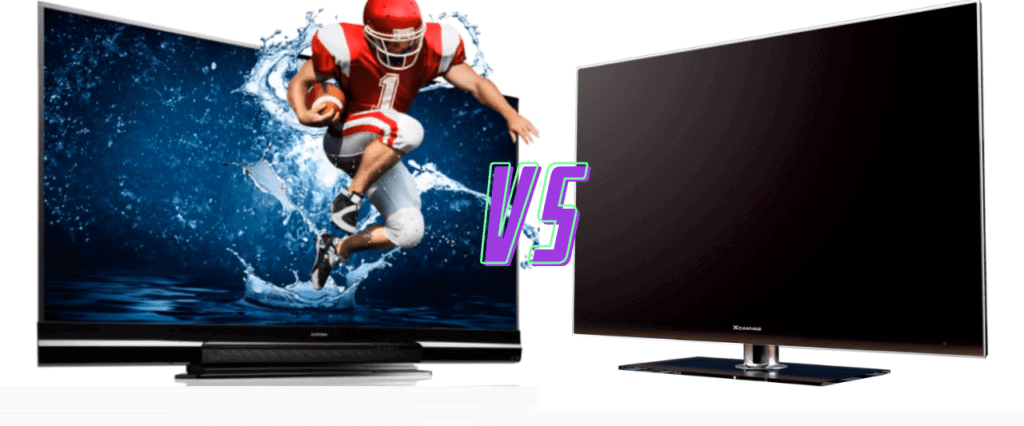
An HDTV with 3D compatibility can be said 3D TV”. 3D compatibility is a feature on high-end LED, LCD, and Plasma TVs
This allows those TVs to display specially created 3D videos with the right accessories – that is, 3D glasses and a 3D source device. It’s not that 3D TVs are only used to see 3D videos, You can also watch normal 2D videos with no problem 2D picture quality is not affected in 3D TVs.
But the problem is that 3D technology comes into action only if we have 3D video content like 3D movies or 3D channels (Although most 3D TVs have a 2D-to-3D conversion process, this process normally doesn’t produce good quality videos to compete with original 3D content.
It is also noticed that sometimes 3D glasses and videos cause discomfort. In my opinion, you should enjoy the 3D technology in cinema halls only, because as I said it can cause discomfort, and irritation and also you will require special accessories like 3D glasses and videos to enjoy the 3D. So go and buy and stick to a normal non-3D TV(2D TVs) and save the 3D for theatres.
Curved TV Vs Flat TV
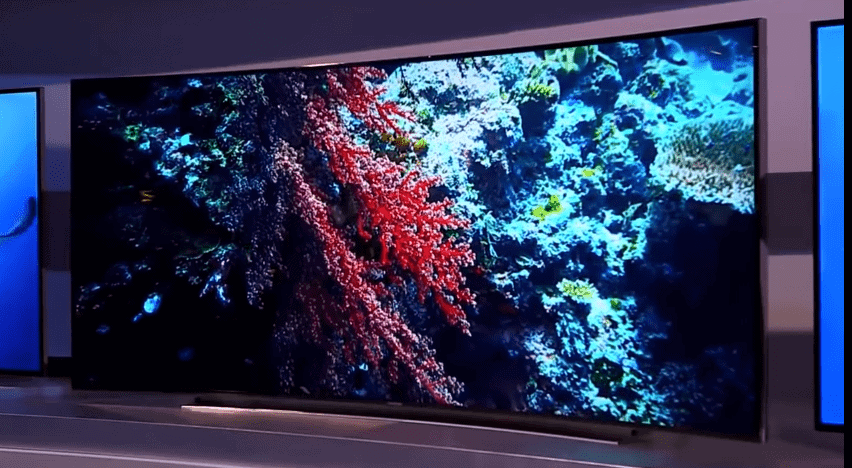
Curved TVs are introduced in the market to give a better viewing experience to their customers. If you are sitting at the right distance, a curved screen can reduce nominal optical distortions and give you a wider view.
But the main problem arises when we watch TV with our family. The curving of the screen affects a screen’s viewing angle. If you are watching a curved TV from a different side then the picture looks slightly distorted. In other words, it’s excellent if you’re the only person watching TV, from a single chair you never leave.
Otherwise, it doesn’t really help. And the curved screen does nothing to correct the distortion on the vertical axis. Also, the curved-screen TVs are somewhat pricier and bulkier which is not really a problem with some customers but it causes viewing problems more than their cost.
Indeed most of the images and videos are made for viewing on a flat screen only and due to this, some videos look crap.
Which TV is good to buy HD Ready 720p, Full HD 1080p, Ultra HD, or 4K
HD(High Definition) Screens are everywhere -starting from TVs and monitors to Smartphones, Tablets but they vary in pixels. So each display of different sizes has different resolutions such as 720p, 1080p, and 4K. Now let us talk about this topic in detail.
HD Ready 720p – HD Ready refers to an image having 720p image resolution with 720 pixels vertically and 1280 pixels horizontally having 9,21,600 total pixels. Usually, it is considered the lowest quality of High Definition.
Full HD 1080p– Full HD refers to an image having 1080p image resolution with 1080 pixels vertically and 1920 pixels horizontally having 20,73,600 total pixels which are approximately 2 times the total pixels of HD Ready.
4K TV– 4K refers to an image having a resolution of 4000p with 2160 pixels vertically and 4096 pixels horizontally having 88,47,360 total pixels which are approximately 4 times the total pixels of Full HD displays.
Ultra HD TV– Ultra HD TVs are somehow similar to 4K TVs, the only difference between them is the difference in pixels, Usually, UHD has 2160 pixels vertically and 3840 pixels horizontally(approximately 8.2 Million pixels).
Now the big question is which TV is good to buy? Well, that depends on your budget. As the number of pixels increases the price also increases.
And if you buy a 4K or UHD TV then You have to upgrade your set-top box to HD also you cannot play 720p or 1080p resolution videos on 4K or UHD TVs otherwise you will see blurry images on your screen.
So if your budget is high then you can buy 4K or UHD TVs and if your budget is low and you cannot upgrade your set-top box then you can buy HD or Full HD.
Also read:- Top 15 Best Camera Apps For Android Users
Can we use the TV as a computer monitor? How TV & monitors different?
Yes, you can use the TV as a monitor for your computer if your TV requires a number of ports. Now let us talk about this in-depth.
In day-to-day life, the major problem of using an HDTV is the bigger screen but lower resolution. You will find difficulty in reading articles on used TVs as compared to the monitor as TVs have very high resolution. And also it requires more area for the setup.
But if you use a TV having 25 or 27-inch then you can have a better experience because many monitors have a size of 25-27 inches. For entertainment purposes, a bigger TV is also a good option but if you use a full HD TV then you have to sit at some distance to reduce eye strain which reduces your experience, and as I said it also requires a large area for setup.
But you still can use 25-27 inch TVs for a better experience. If you want to use your TV as a permanent monitor, then you should have an extra or old TV otherwise you have to forget to watch TV because replacing a monitor with a TV is time-consuming and hard-working. Now let us see the differences
- Monitors have very little delay just about a few milliseconds while even high-end TV have at least a 10-millisecond delay which a gamer may not like.
- The color balance is optimized on TVs for watching movies in order to provide a better viewing experience and on computer monitors, true color correctness matters more.
- Some TVs with more “powerful†displays may suffer from burn-in if you leave the same static display up on the screen for hours at a time whereas no such problem is supposed to happen on monitors.
- Monitors are made to show everything as it is. They are not supersampled, not more fluid behind the display, and not with boosted colours. It will show you the best illustration of the original image- without deforming it in any form.
Which is the best TV Brand in INDIA?

If we talk about brands then every brand is unique and popular for its own quality and specifications. Still, I have tried my best to classify the brand based on available data and knowledge based on my analysis of different products of different brands in India.
Some people may have completely different points of view and can have their own valid reasons and perceptions. But any list of “best†can vary from person to person based on their own ideas and perceptions.
- Best Brand for Picture Quality – Sony
- Best Popular TV Brand in India – Samsung
- Best Value for Money Brand (latest and greatest technology in your TV – Panasonic
- Best Brand for SMART TVs – LG
- Best Budget Brand – Mi and Vu
You may find other brands in your nearby mall but these are the most demanding, trustworthy, and best-known brands available in the market. You will get detailed information about various brands from the internet or from the salesman of the offline stores.
Conclusion
Thank you for reading our guide on how to buy a TV. We hope that this information has been helpful and will lead you to the perfect television for your home. Before making your purchase, be sure to consult with a sales representative to get assistance in finding the best TV for your needs. Happy shopping!
If you are outdated then you will be easily fooled by the fake marketing strategies and consequently, you will face a loss and realize it after some days of using the TV.
So be updated and ask every sort of question to the salesperson before buying a TV, If you have any queries feel free to leave your question in the comments section below. If you found this post useful, Please like and share it with your friends.
